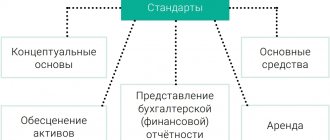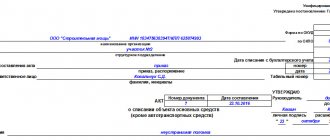Types of property of a budgetary institution
According to paragraph 9 of Art. 9.2 of the Law “On Non-Profit Organizations” dated January 12, 1996 No. 7-FZ, all property of the BU is under its operational management, and the owner is the state. The table below discusses how a BU can manage its OS objects.
| Types of property | Property disposal rules |
| Real estate | |
| Any real estate | It is necessary to obtain the consent of the owner for any transactions with this property |
| Movable property | |
| Particularly valuable property transferred and assigned by the owner to the BU | It is necessary to obtain the consent of the owner for any transactions with this property |
| Particularly valuable property purchased with funds received from the owner of the used property | |
| Particularly valuable property purchased with funds earned by the BU independently in carrying out operations that generate income | Manages independently. Exceptions:
|
| Other movable property | |
Particularly valuable property is movable property that ensures the activities of the BU and in the absence of which the statutory activities will be carried out with significant difficulties (Clause 11 of Article 9.2 of Law No. 7-FZ). The list of especially valuable movable property is fixed by the founding body.
Rules for writing off fixed assets in budgetary institutions in 2021 -2021
Decommissioning of the OS can occur for the following reasons:
- The OS has lost its properties completely or partially and cannot function properly,
- The OS is no longer in use due to its destruction or loss.
The following are not grounds for writing off the OS:
- 100% depreciation of the asset;
- expiration of useful life;
- transfer of the OS into operation.
After the expiration of the useful life of a fixed asset, it is subject to write-off only if it is truly unsuitable for further use and its restoration is impossible or economically impractical (for example, if the cost of restoration exceeds the benefits that can be obtained from the use of this object).
To write off fixed assets, an institution must organize a special commission that operates constantly to make decisions on such issues (clause 34 of the Unified Chart of Accounts, approved by order of the Ministry of Finance of the Russian Federation dated December 1, 2010 No. 157n). The commission must draw up and approve the write-off act:
- non-financial assets (except for vehicles) (form according to OKUD 0504104);
- vehicle (form according to OKUD 0504105);
- soft and household equipment (form according to OKUD 0504143);
- excluded objects of the library collection (form according to OKUD 0504144).
These forms were approved by order of the Ministry of Finance of Russia dated March 30, 2015 No. 52n. These forms began to be used by BU in 2015 and continue to be used in 2020-2021.
The act must be agreed upon with the founder of the BU, if required by law. Next, the head of the accounting department endorses the act, after which actions are taken to uninstall, disassemble, liquidate the OS, and only after that the write-off is reflected in accounting on the basis of the act (clause 52 of the Unified Chart of Accounts).
A sample of filling out an act on write-off of fixed assets according to form 0504105 is available in ConsultantPlus. Get free demo access to K+ and download the document.
The list of documents that must be prepared by the commission to approve the disposal of fixed assets depends on who is the founder of the BU, that is, the owner of its property. If the BU is created on the basis of the property of a constituent entity of the Russian Federation or a municipality, then it is necessary to be guided by the legislative acts adopted by the relevant constituent entity or municipality.
If the property of the BU is federal, then the rules are established by the federal executive body to which the institution is responsible. The general document for accounting institutions managing federal property is the provision “On the specifics of writing off federal property”, approved by Decree of the Russian Federation dated October 14, 2010 No. 834, as well as the Procedure for submitting documents for approval of the write-off of federal property, approved by order of the Ministry of Economic Development and the Ministry of Finance of the Russian Federation dated March 10, 2011 No. 96/30n.
Sources of financing
The need to purchase fixed assets (fixed assets) from two sources of financing arises if the institution does not have enough subsidies allocated from the corresponding budget for the purchase of fixed assets on its personal account. Then the institution pays the missing part of the funds from the funds it received from other income-generating activities (i.e., entrepreneurial).
When an institution acquires an asset, it is necessary to take into account the fact that the budget legislation of the Russian Federation allows for the reimbursement of budget expenses from funds from business activities. Reimbursement of off-budget expenses from budget financing is temporarily allowed with the permission of the main manager, with the subsequent restoration of funds in the account upon receipt of budget allocations (subsidies for this type of expense).
Note!
It is possible to pay for goods (including assets), work, and services using allocated subsidies if they are necessary to fulfill the state task in accordance with the financial and economic activity plan.
It is unacceptable to pay at the expense of subsidies for goods, works, services that will be used only in business activities, since subsidies in the form of appropriations are allocated to the institution for specific purposes, in particular for reimbursement of regulatory costs, for the maintenance of real estate and especially valuable movable property assigned for the establishment by the founder or acquired at the expense of the founder (clause 1 of article 78.1 of the Budget Code of the Russian Federation).
The budget accounting account number includes the source of funding. The inclusion on the balance sheet of an institution of an object acquired through several sources of financing must be reflected in several accounting accounts.
Thus, assets acquired through allocated subsidies for their acquisition and intended for use in fulfilling a state task will be reflected according to the code of the type of financial support (KFO) 4. Assets acquired through entrepreneurial activity are reflected according to KFO 2.
But if the same object of fixed assets is reflected in several accounting accounts (accepting fixed assets for accounting in parts), problems arise during inventory, revaluation, depreciation, internal movement and writing off such objects from the balance sheet.
An object of fixed assets is an object with all its parts and fixtures and accessories or a separate structurally isolated item intended to perform certain independent functions (clauses 41, 45 of the Instructions for the application of the Unified Chart of Accounts for public authorities (state bodies), local authorities self-government, management bodies of state extra-budgetary funds, state academies of sciences, state (municipal) institutions (hereinafter referred to as Instruction No. 157n), approved by Order of the Ministry of Finance of Russia dated December 1, 2010 No. 157n (as amended on November 16, 2016)).
Therefore, one fixed asset item cannot be listed as separate inventory items accounted for with different type of financial security (KFO) codes.
Important!
One fixed asset item can be accounted for in only one budget accounting account.
Accounting for write-off of fixed assets
Accounting entries for the disposal of fixed assets are given in paragraph 10 of the section “Non-financial assets” of the Instructions for the use of the budget chart of accounts, approved. by order of the Ministry of Finance of the Russian Federation dated December 6, 2010 No. 162n. Here are the main entries:
| Description | Dt | CT |
| Write-off of assets due to loss, shortage, destruction for reasons not related to natural disasters | 010400000 “Depreciation” (010411410–010413410, 010415410, 010418410, 010421410–010428410, 010431410–010438410, 010441410–010448410), 0 40110172 “Income from operations with assets” | 010100000 “Fixed assets” (010111410–010113410, 010115410, 010118410, 010121410–010128410, 010131410–010138410, 010141410–010148410) |
| Write-off of fixed assets in connection with emergencies and natural disasters | 010400000 “Depreciation” (010411410–010413410, 010415410, 010421410–010428410, 010431410–010438410, 010441410–010448410), 040120273 “Through extraordinary expenses on transactions with assets" | 010100000 “Fixed assets” (010111410–010113410, 010115410, 010121410–010128410, 010131410–010138410, 010141410–010148410) |
| Write-off of the OS for other reasons, including in connection with the decision of the commission to end the use of the OS due to loss of technical properties | 010400000 “Depreciation”, 040110172 “Income from operations with assets” | 010100000 “Fixed assets” |
| Assets for which a decision has been made to write off, but dismantling measures have not yet been carried out, are reflected on the balance sheet | 02 “Material assets accepted for storage” | |
| Materials remaining after write-off of fixed assets have been accepted for accounting | 010500000 “Inventories” (010521340–010526340, 010531340–010536340) | 040110172 “Income from operations with assets” |
| The costs of carrying out work to write off the operating system are reflected | 040120200 “Expenses of an economic entity” | 030211730 “Increase in payables for wages”, 030306730–030311730 “Increase in payables for insurance premiums”, etc. |
A sample act on the liquidation of an asset was provided by ConsultantPlus experts. If you do not have access to the K+ system, get a trial online access for free.
For general information about fixed assets in budget accounting, read the article “Budget accounting of fixed assets in 2020-2021 (nuances)” .
Read about innovations in budget accounting in the article “Working chart of accounts of budget accounting for 2020 - 2021” .
Accounting on off-balance sheet account 002
Account 002 is called “Inventory and materials accepted for safekeeping.” An organization transfers inventory assets to it if it:
- Ensures their safety on the basis of a property storage agreement (Chapter 47 of the Civil Code of the Russian Federation). When accepting valuables from a counterparty, an act is drawn up in form MX-1. The return of objects to the owner is documented by act MX-3; in addition, the owner records the absence of claims against the custodian organization in the MX-2 log. The custodian organization may not use the listed unified primary data in its work, but develop its own forms taking into account the requirements for mandatory details (clause 2 of article 9, clause 4 of article 10 of the Law “On Accounting” dated December 6, 2011 No. 402-FZ ).
- She has received goods and materials, but due to circumstances she cannot capitalize them in the usual manner: the organization refuses to pay for the valuables due to violations by the other party of the terms of the supply agreement, or these are valuables that cannot be spent until the final settlement with the supplier. Or there was a re-grading - the buyer received goods and materials, but not the ones he ordered. The company cannot account for such materials on balance sheet accounts, therefore it is reflected in account 002. The basis for accepting such values into an off-balance sheet account and subsequent write-off is the primary document drawn up by the parties under the supply agreement (TORG-12, UPD or other documents agreed upon by the parties).
- I sold the valuables to the buyer, but he has not yet removed them. In this case, the transfer of inventory items to off-balance sheet account 002 is confirmed by safe receipts between the parties.
- Made valuables from customer-supplied raw materials - in this case, the customer-supplied raw materials received from the customer are first accounted for on off-balance sheet account 003, and the products made from these raw materials are transferred to account 002 until the final settlement with the customer on the basis of an invoice for internal movement between departments.
Accounting transactions for transferring inventory items to account 002 and writing them off from it are drawn up as follows:
| Debit | Credit | Contents of operation |
| 002 | Acceptance of inventory items for storage | |
| 002 | Disposal of inventory items accepted for storage |
Results
The write-off of fixed assets should be carried out solely upon the consideration of a commission that meets and is appointed by order of the head of the institution.
Documents must be drawn up in accordance with the legal regulations of federal, municipal bodies or bodies of constituent entities of the Russian Federation. In accounting, write-off is carried out after the actual liquidation of the asset. You can find more complete information on the topic in ConsultantPlus. Free trial access to the system for 2 days.
Coordination with the subject of management
- on inventory accounting accounts - components, parts, materials and assemblies suitable for repair of other equipment or for further use, as well as materials received as a result of write-off of property;
- on the accounting accounts OS - OS;
- as secondary raw materials - unsuitable components, parts, materials and assemblies.
- refrigerator: initial cost – 7,500 UAH; depreciation as of 01/01/17 – 4,286 UAH; residual value 01/01/17 – 3,214 UAH. (7,500 UAH – 4,286 UAH). This amount as of 01/01/17 was transferred to subaccount 5111. Over 2 years of operation, depreciation was accrued in the amount of UAH 2,142. Depreciation as of 01/01/19 – 6,428 UAH. (4,286 UAH. 2,142 UAH). Residual value – 1,072 UAH. Due to the write-off of the refrigerator, usable spare parts worth 800 UAH were received. and scrap metal in the amount of 210 UAH;
- computer: initial cost – 6,750 UAH; depreciation as of 01/01/19 – 6,750 UAH; residual value – 0 UAH.
More on the topic How are loans taken during marriage divided during divorce?
- for depreciable property objects not used in business activities - based on their depreciable cost and annual (monthly) depreciation rates (amounts) for these objects calculated in accordance with the established standard service lives.








